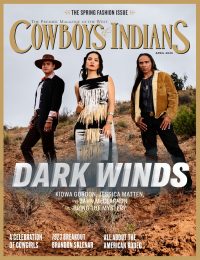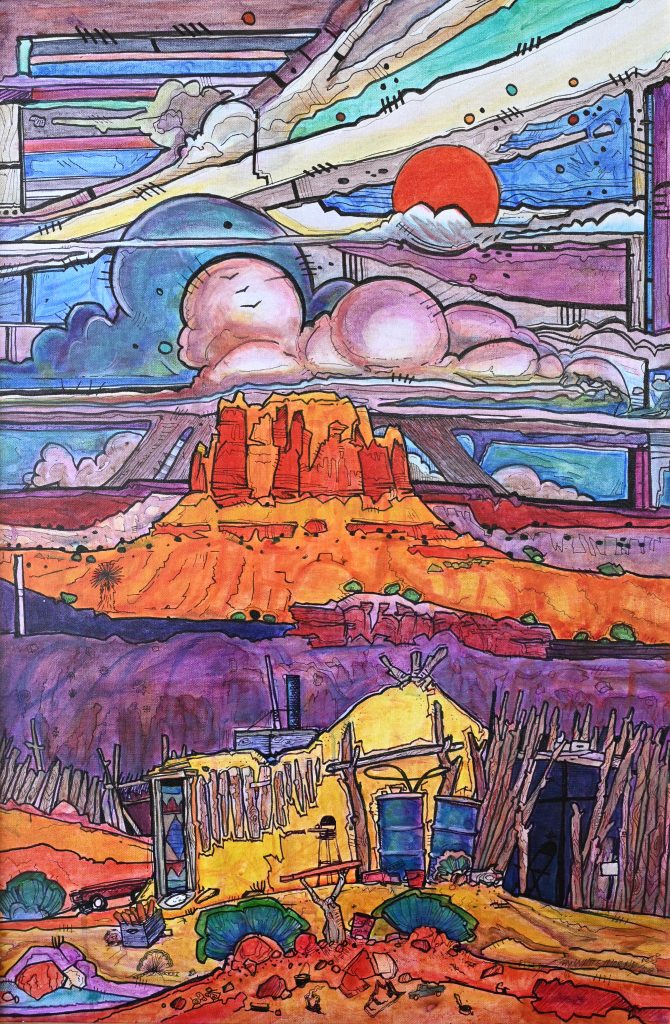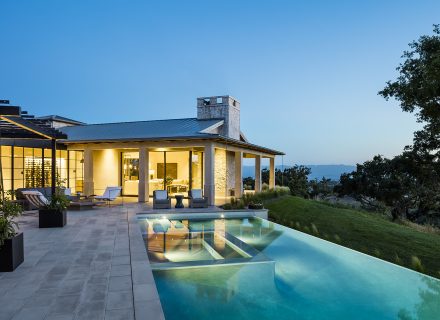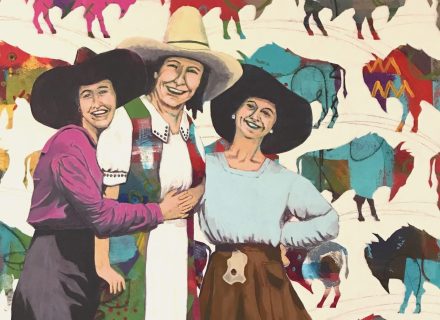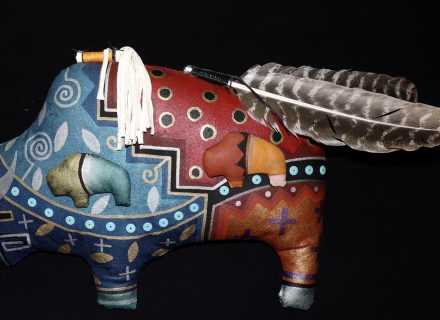Depicting the beauty, color, and power of Native American culture and landscape for decades, Baje Whitethorne Sr. is one of the most transformative artists of the century.
Baje Whitethorne Sr.’s artwork swirls with colorful energy. Purple clouds gather over layered red-rock canyons and sunlight blazes across plains and plateaus. The Flagstaff, Arizona-based artist’s paintings highlight the Navajo culture in which he grew up.
“Ever since I was a kid, I was always fascinated by people who knew how to draw,” says Whitethorne, 72, who was born and raised near the community of Shonto, Arizona, on the Navajo reservation in the Four Corners region.
Seeing his interest, Whitethorne’s grandfather gave him a sheet of paper and taught him to sketch a simple horse. When he ran out of space on that paper, he drew on chair legs and table bottoms. And when his pencil wore out, he used a nail to scratch out horses on metal surfaces.
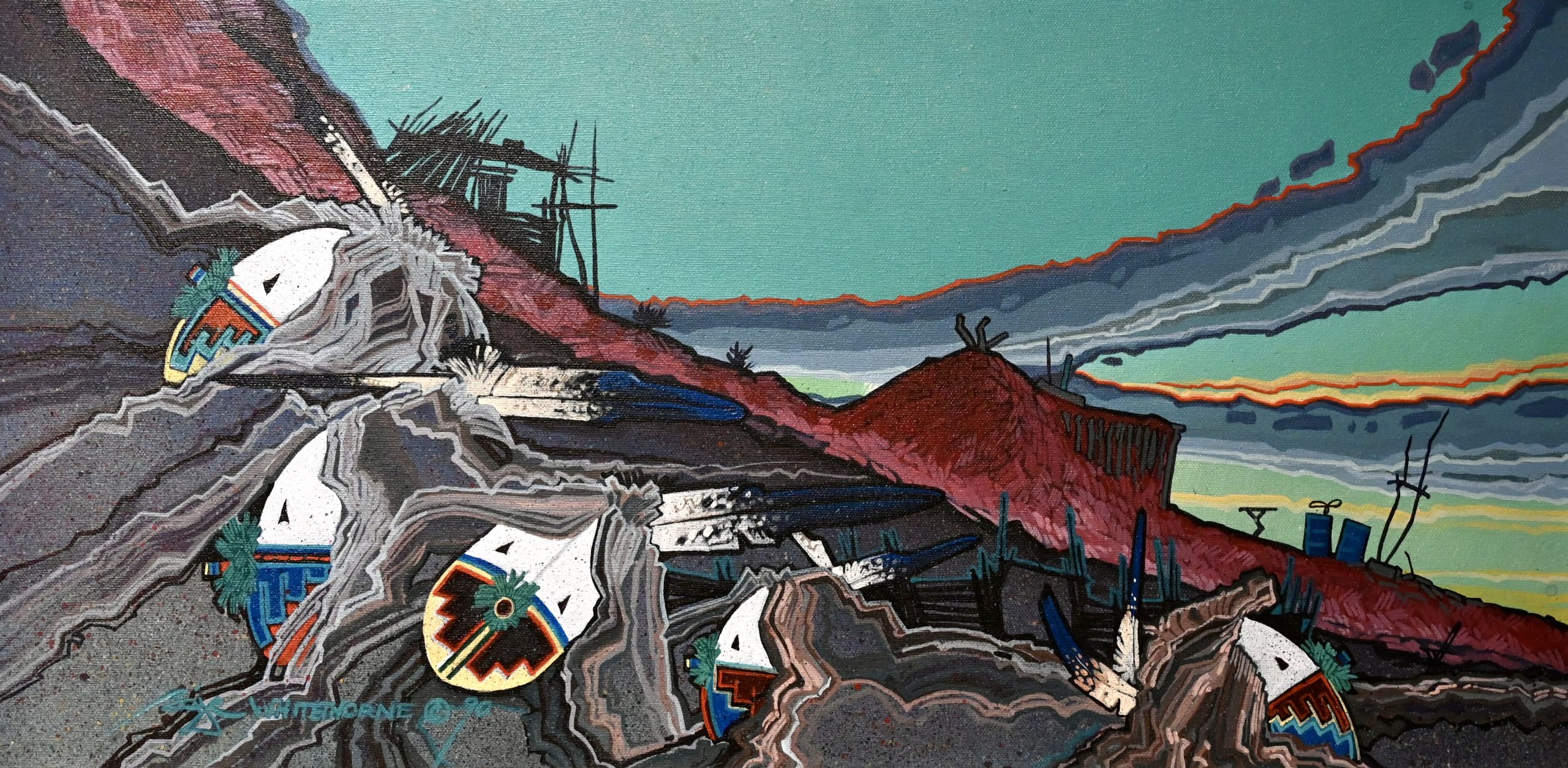 Chaser of the Inlaws, Acrylic on canvas, 1991, Collection of Museum of Northern Arizona, 15.25 x 22.25 x 1", 2022.
Chaser of the Inlaws, Acrylic on canvas, 1991, Collection of Museum of Northern Arizona, 15.25 x 22.25 x 1", 2022.
That worked until he etched a few horses on the front of his dad’s truck. His father wasn’t pleased, but there was no denying the boy’s talent.
Whitethorne eventually studied art at Grand Canyon College (now Grand Canyon University) and Northern Arizona University, where he began going by Baje (pronounced BAH hee), instead of his given name of Bahe. A clerk had gotten it wrong when he registered for classes; the name stuck.
Today Whitethorne doesn’t sketch his paintings in advance. They simply evolve.
“I go into the studio and see what I’ve got on the palette,” he says. “The colors, the paint, the brushes, the pens — whatever is on the table gets me going.”
Whitethorne grew up among people who tended goats, sheep, horses, or cattle. They gathered wood for fires and drew water from springs or wells.
“That’s where I came from; I know it firsthand. I can visualize it, go back to it, experience it, and paint it,” he says.
The artist works in a studio built into a two-car garage at his home, or heads outdoors to paint beneath a canopy of trees. Sometimes he’ll overnight someplace inspiring, like nearby Monument Valley, to get ideas.
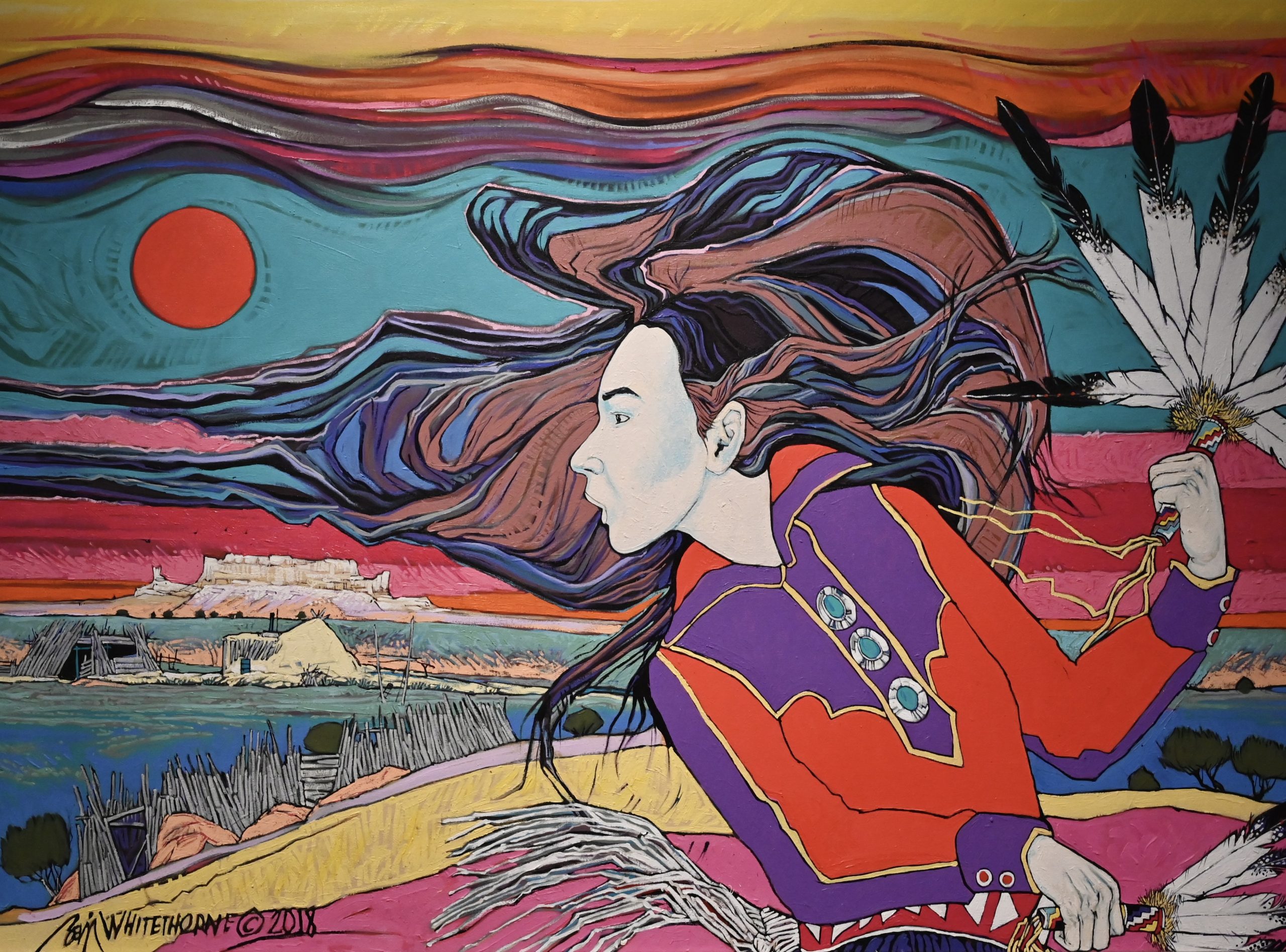 White Shell Woman, Acrylic on Canvas, 2018, Courtesy of the artist.
White Shell Woman, Acrylic on Canvas, 2018, Courtesy of the artist.
“If you stand in one spot and look in four directions, there’s always something interesting happening with the clouds, the shadows, and the colors,” he says. “Those experiences are what shows up in my work.”
As he works, images from past moments in his life emanate from his paintbrush.
“Something sparks an idea, maybe a dark line across the center of the canvas. In my mind, I see where it goes and what evolves. I’m 72 years old, and there’s no time to set a stage. I just go with the flow of that moment.”
Whitethorne works on several pieces at once and always has something that can be finished that day and some that will be started.
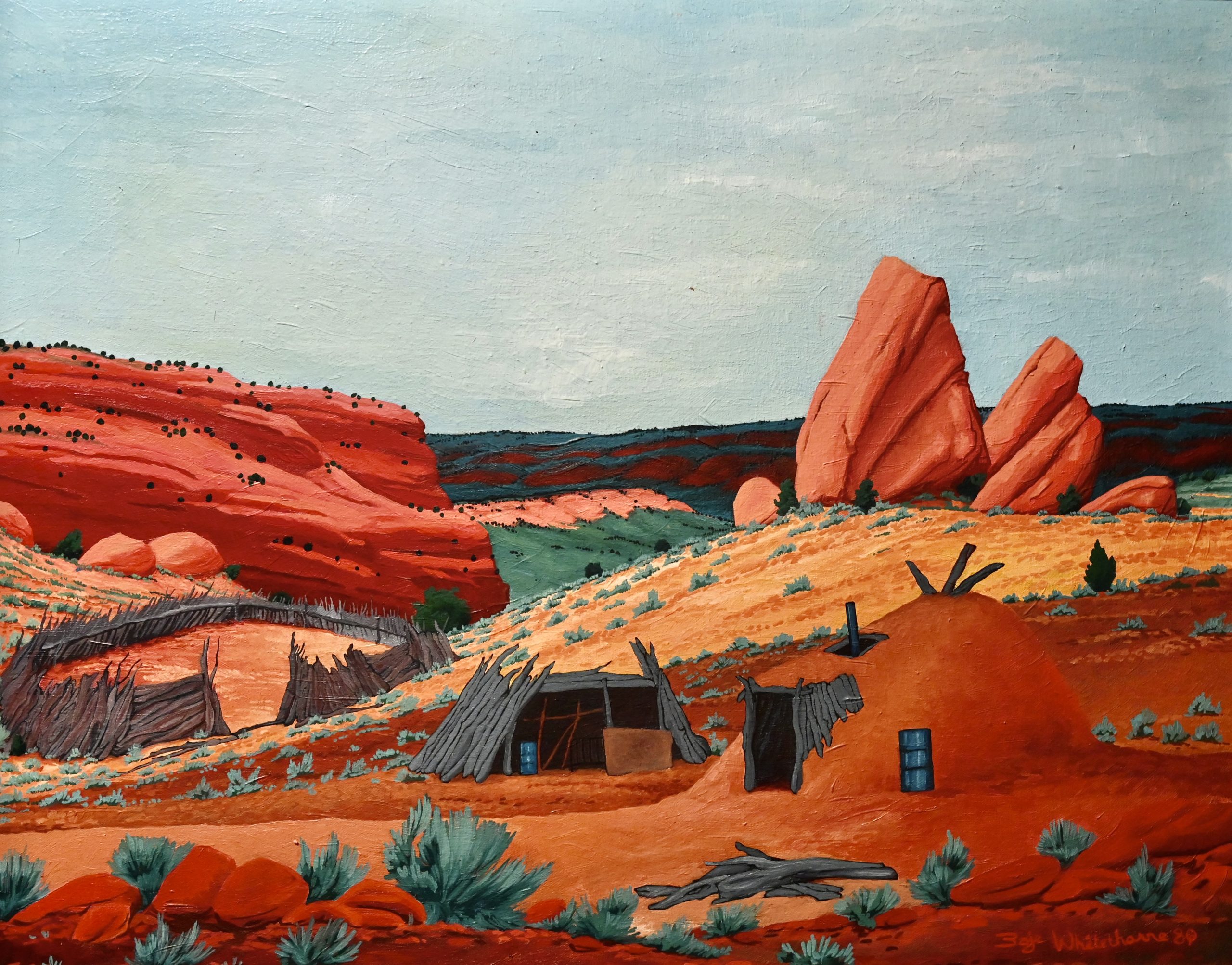 At Sitting Rocks, Arcylic on canvas, 1980, Collection of Museum of Northern Arizona.
At Sitting Rocks, Arcylic on canvas, 1980, Collection of Museum of Northern Arizona.
“If I start something, I might put it down and think about it,” he says. “If there’s nothing in mind, there’s always one sitting right there next to the easel, and I work on that.”
Whitethorne “signs” his paintings by including a small hogan — a traditional Navajo dwelling made of wood and mud — and a chair in each painting. It’s a nod to his mother, who on the day he was born built a fire and put a bucket of water on the stove in her hogan to warm before going outside to dump ash. “Every painting you look at there’s a hogan, and then I put a chair in there to indicate life,” he says.
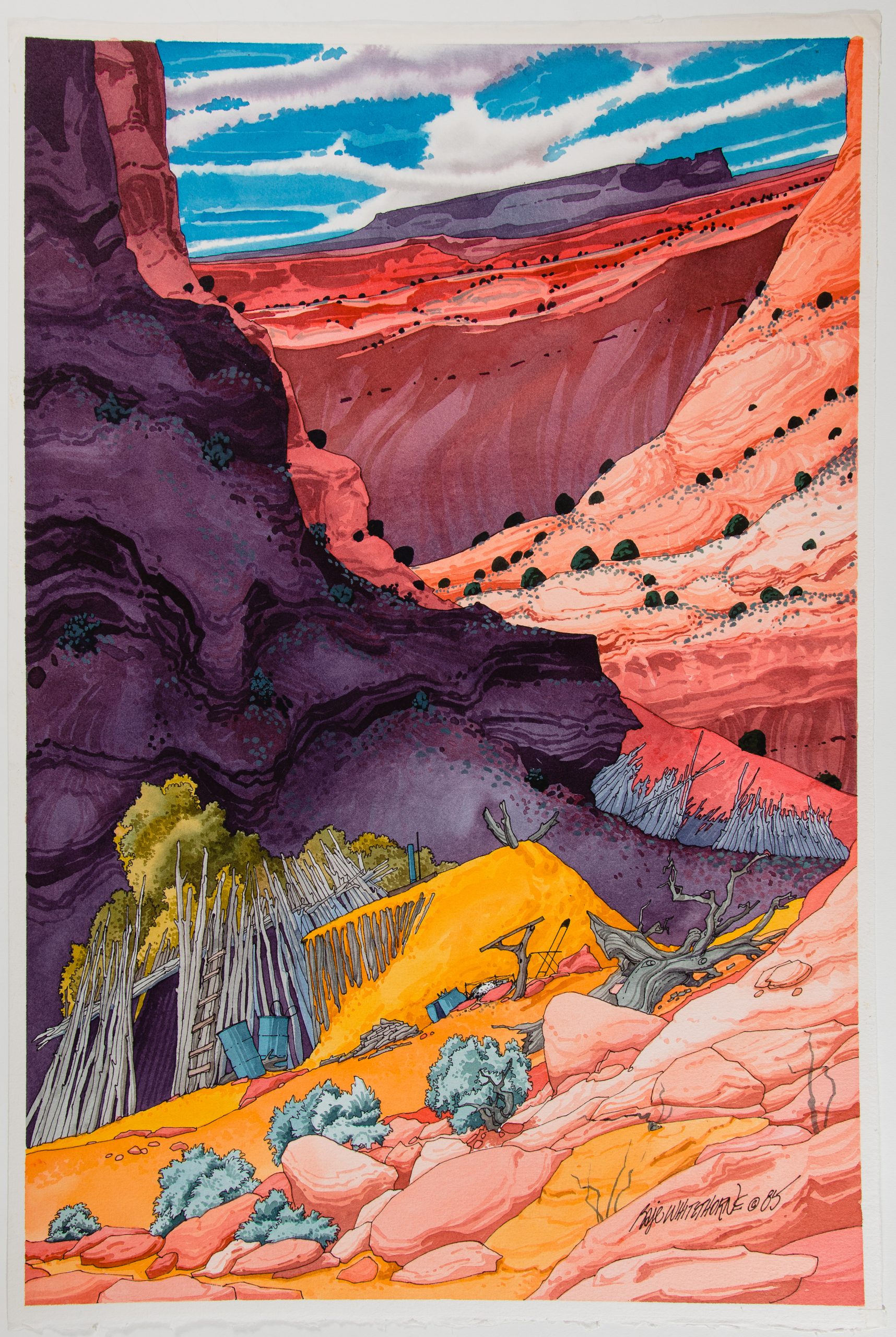 Untitled, watercolor by Baje Whitethorne Sr., 1985.
Untitled, watercolor by Baje Whitethorne Sr., 1985.
He’s also an accomplished printmaker, sculptor, jeweler, author, and illustrator, and he created the art for eight children’s books, two of which he wrote. His work has been shown in the U.S. and abroad, including at Smithsonian’s National Museum of the American Indian, the Booth Western Art Museum, and the Heard Museum. In 1992, he was awarded the Western Heritage Wrangler Award from the National Cowboy & Western Heritage Museum.
Art, Whitethorne says, has made for a rewarding career. His current exhibition, Nááts’íilid/Rainbow Light, isn’t billed as a retrospective, but it does show the range of his work over the years.
“I wanted to include some things he’d done during the pandemic, too, which are noticeably, but subtly, different from his previous work,” says curator Alan Petersen. “We’re just thrilled to have it. Baje is kind of a local hero and very involved with the art community here.”
Nááts’íilid/Rainbow Light will be on view through April 15, 2023, at the Museum of Northern Arizona in Flagstaff (musnaz.org).
Check out more influential artists and get your own copy of our January 2023 issue now.



